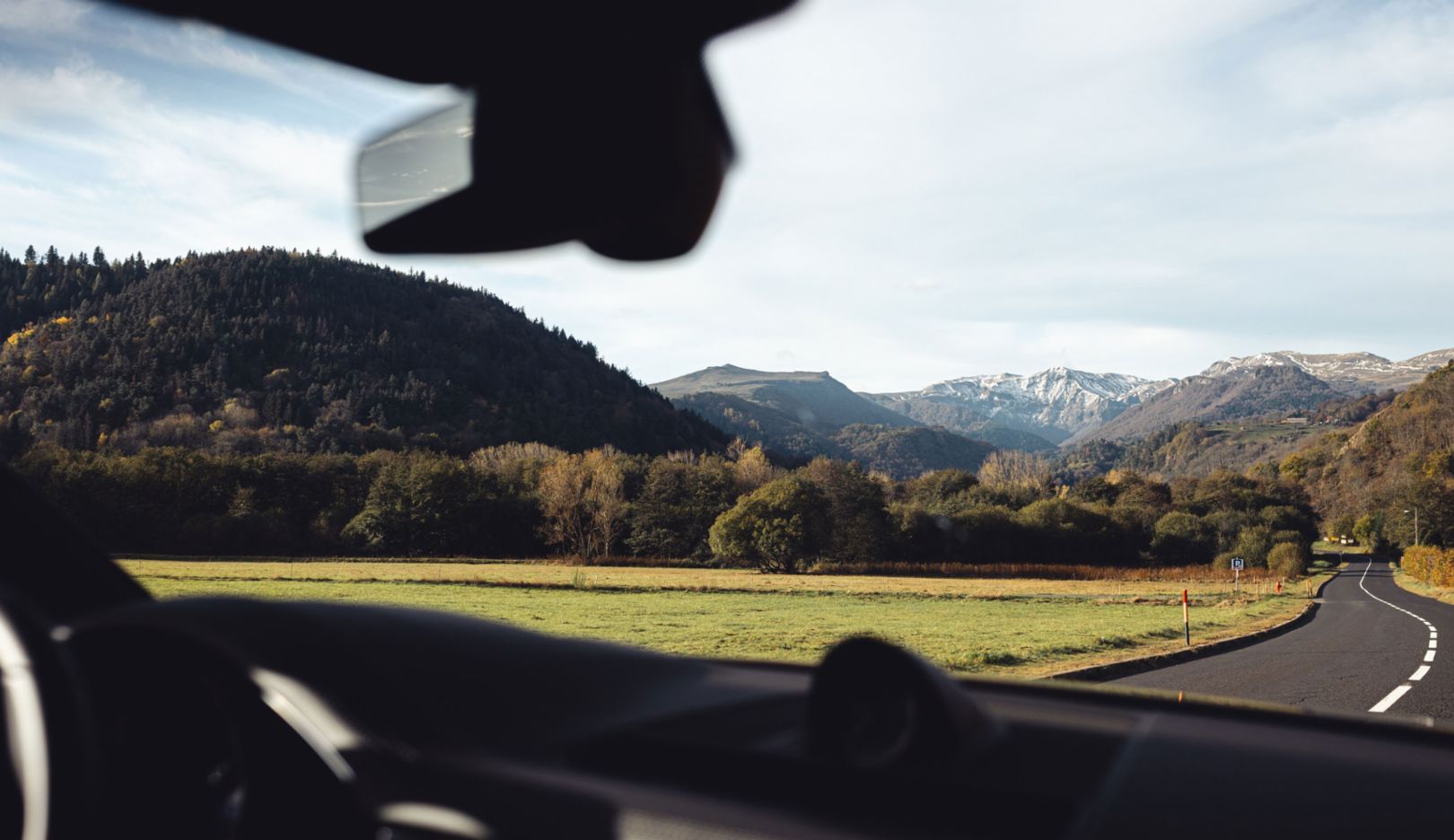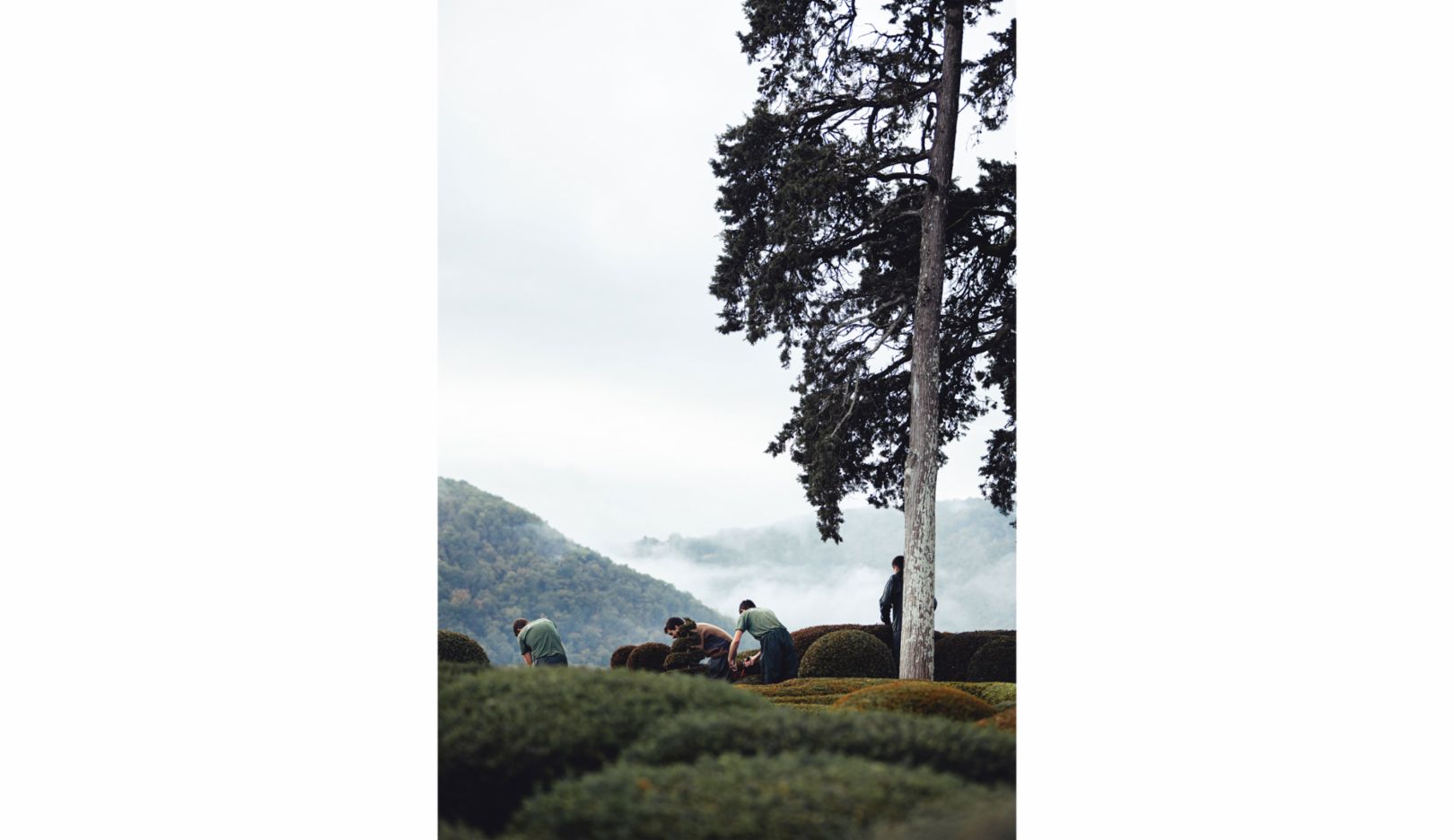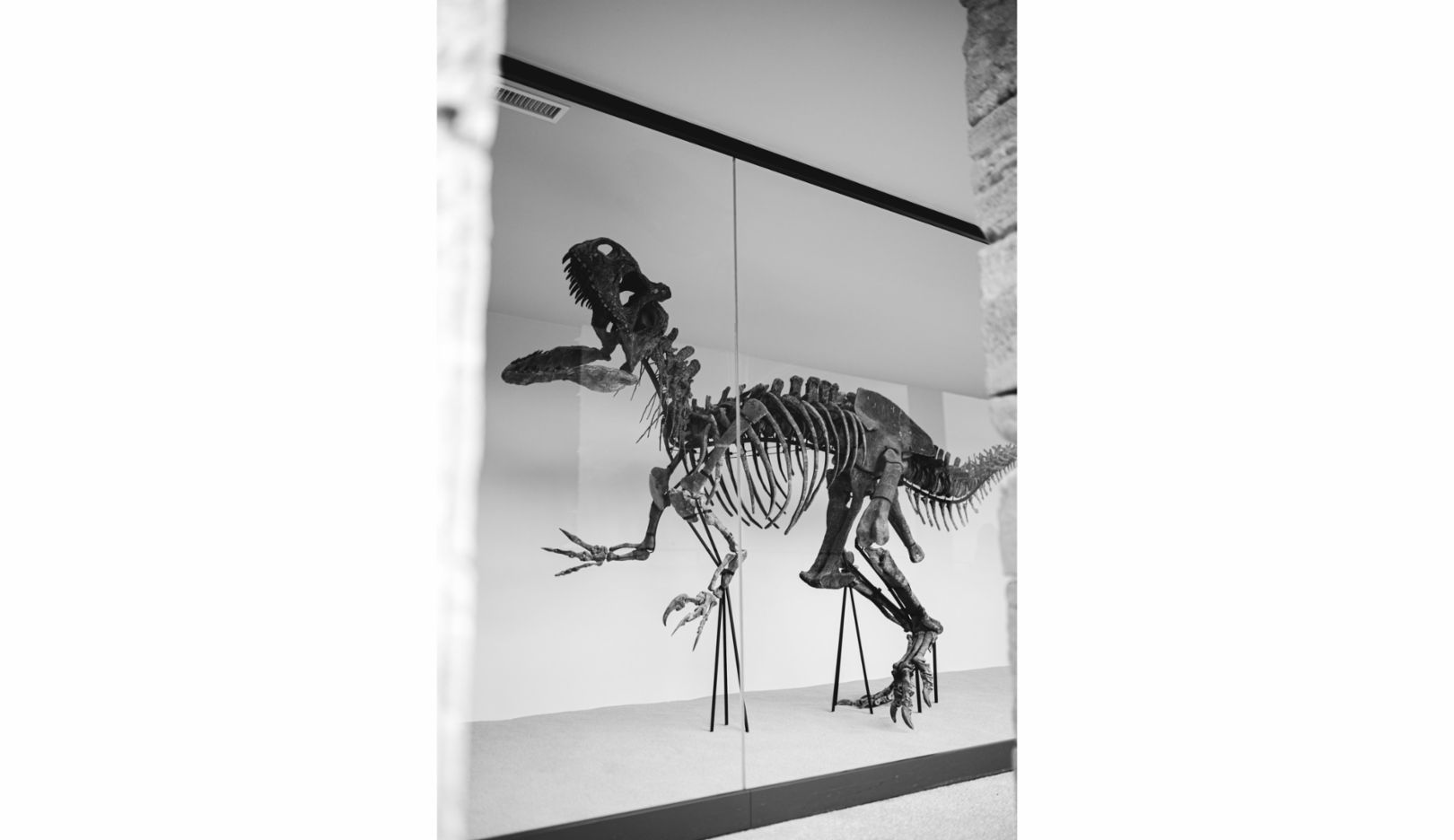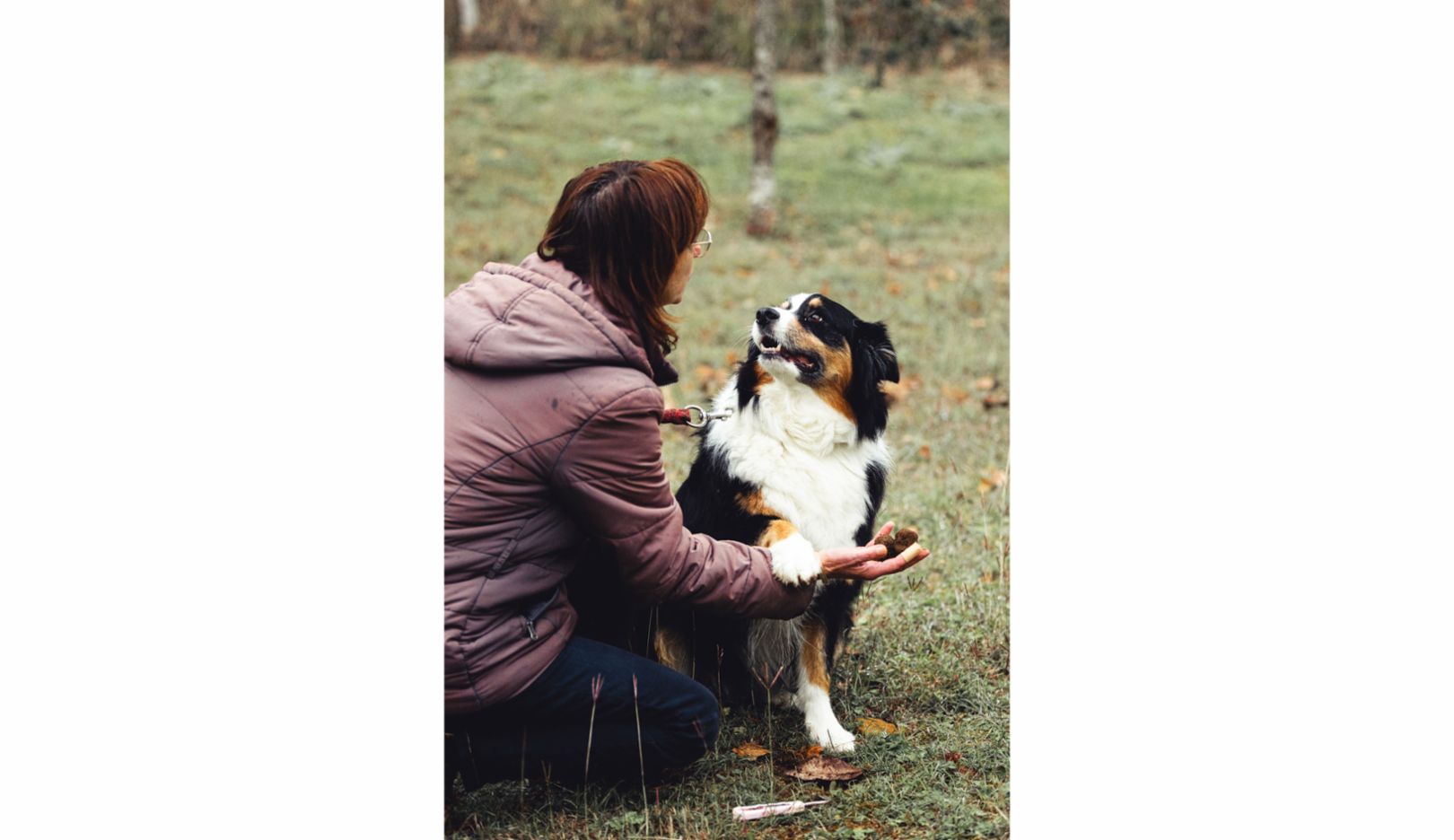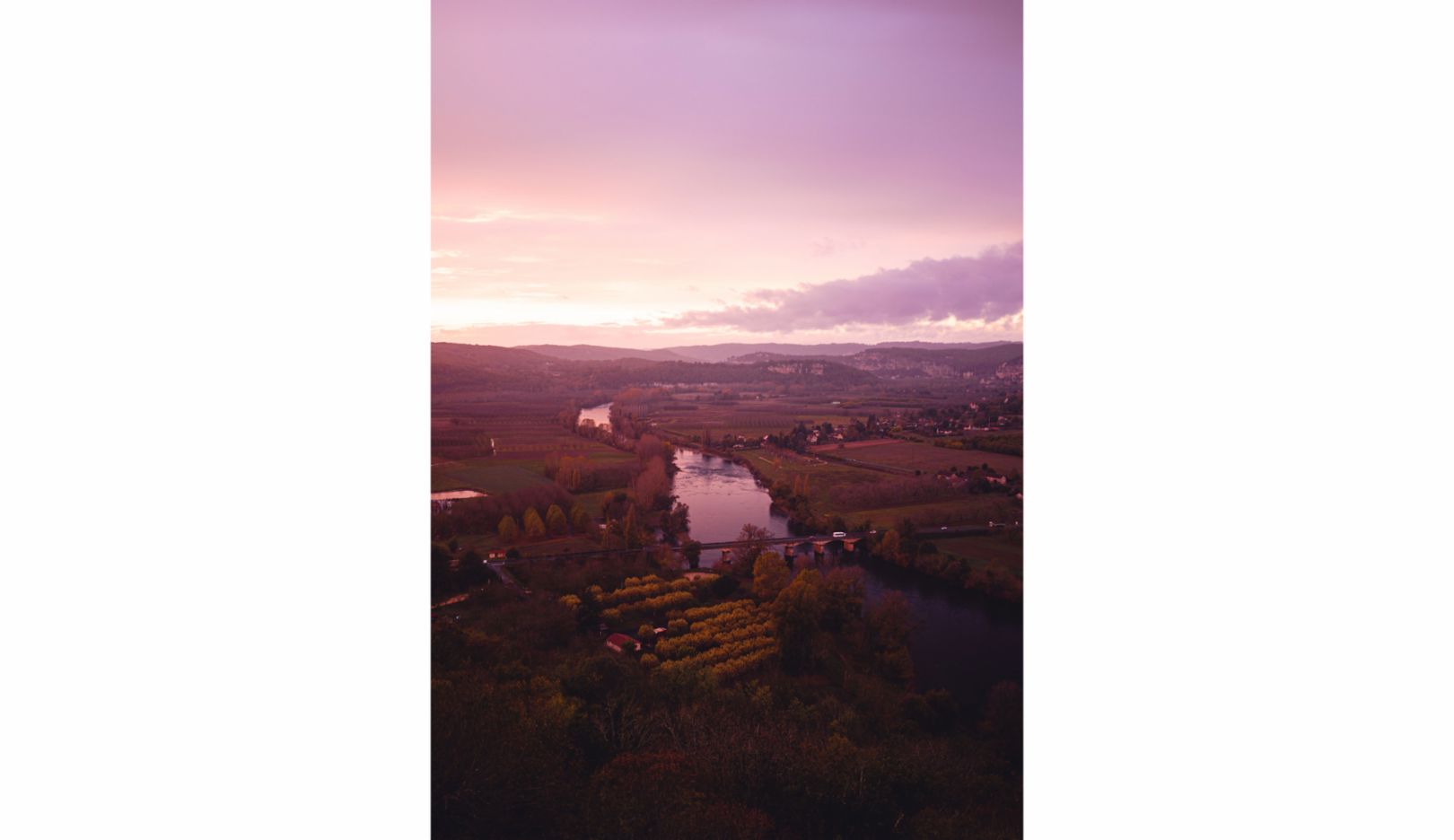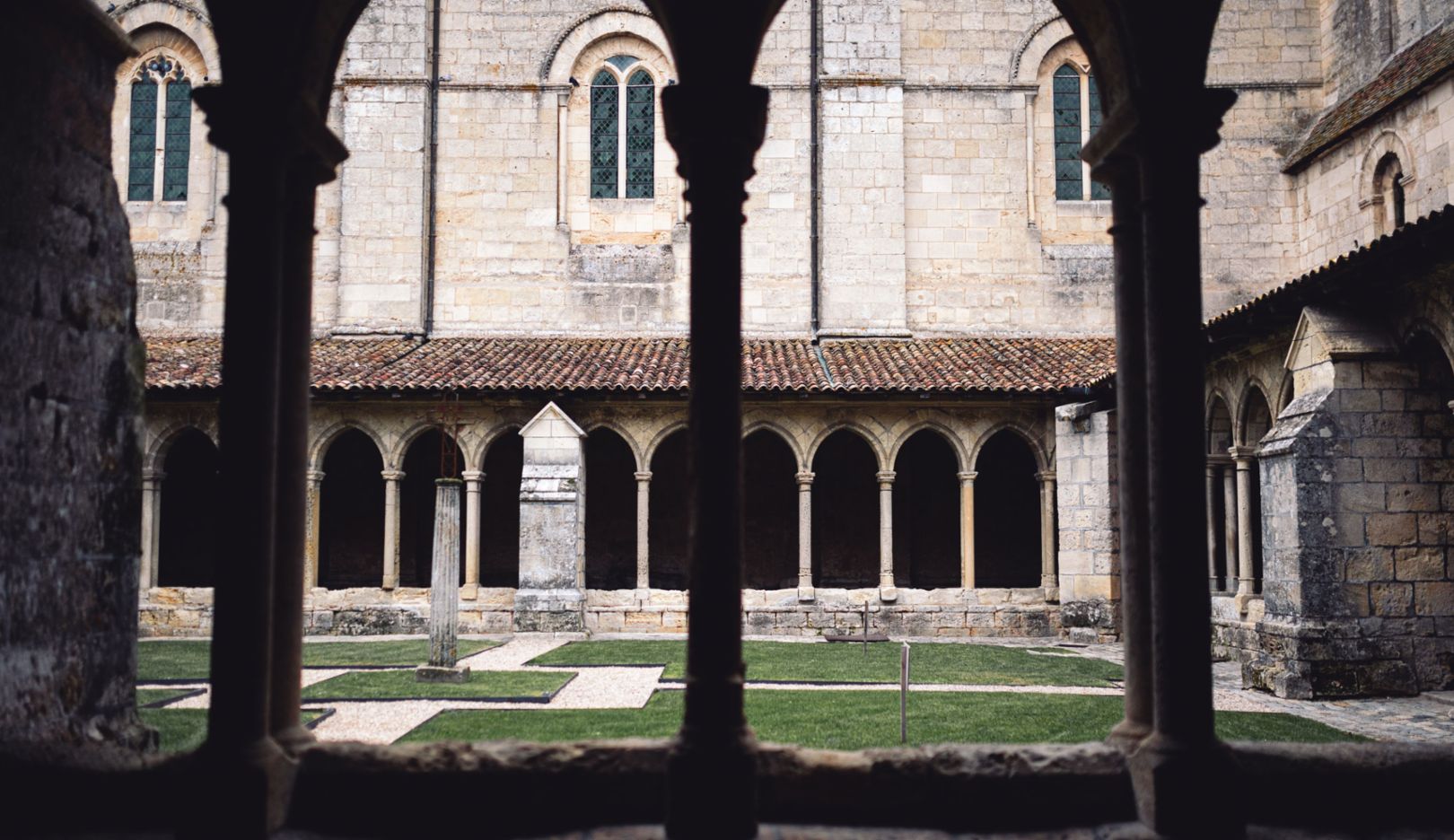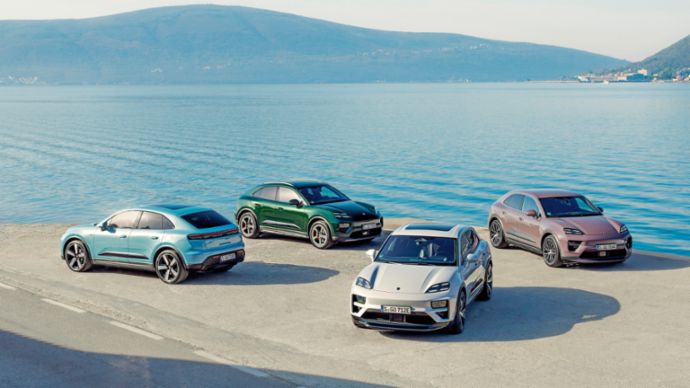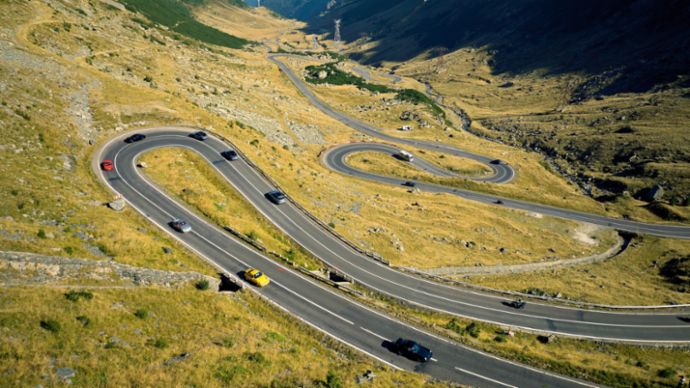Roadbook: Clermont-Ferrand to Bordeaux
The Dordogne River is a lifeline in the region, guiding us through the picturesque volcanic landscapes of southwest France, where we encounter dinosaurs, Stone Age artefacts, and French cuisine.
It’s a kind of wonder that leaves you speechless. Standing inside the Lascaux cave’s Hall of Bulls, we feel like we’ve been transported 20,000 years back in time to the age of the Cro-Magnons. The largest drawing on the rugged walls is a bull around five meters tall, the present-day icon of the Dordogne. Next to it, two large aurochs are accompanied by ten wild horses and a mysterious animal referred to as the unicorn. We also see a bear and deer as we explore the cave with its low ceilings.
“Even for me, it’s still fascinating just how detailed and often three-dimensional the works of art are,” says Gwenn Rigal. The cave guide and amateur researcher takes us back to Europe’s last ice age, when there were very few people, but more wild animals. One of the few indications of human culture is located here in Lascaux. “The cave must have served as a location for rituals, something akin to a sanctuary,” says Rigal, referring to the UNESCO World Heritage Site. No one knows for sure.
Lascaux is considered to be the Sistine Chapel of cave painting and is one of the world’s most important finds of prehistoric art. There are more than 2,000 drawings, most of which are of animals. Painted or carved depending on the background surface, these ancient drawings in yellow, red, brown, and black make for a mysterious, unmistakable atmosphere.
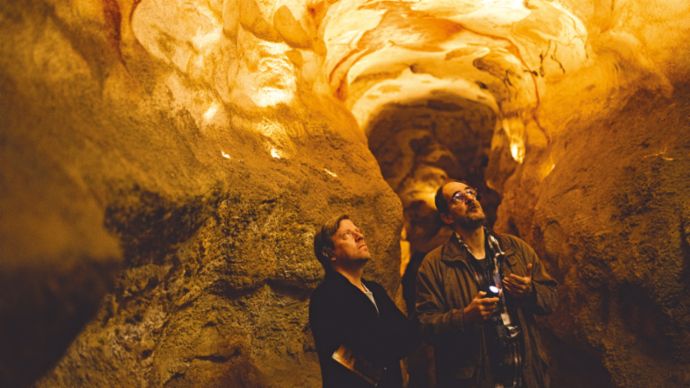
Mystical:
Researcher Gwenn Rigal (on the right in the photo) offers guided tours through the reconstruction of the original Lascaux cave. The drawings in the grotto were likely created around 20,000 years ago.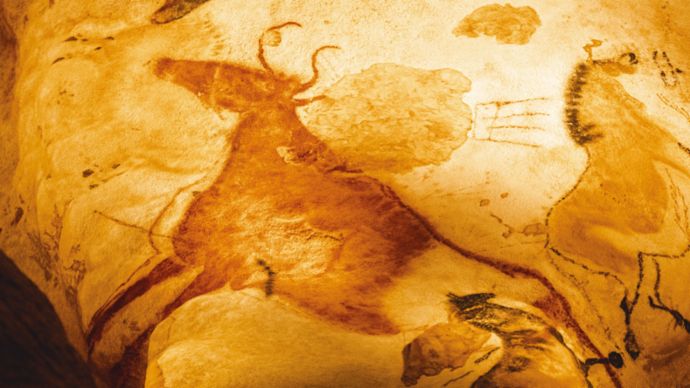
And it doesn’t matter that these are not the originals. Discovered in 1940, the real cave was closed to the public decades ago in order to preserve the irreplaceable cultural monuments. Since 1983, visitors from all over the world have been guided through a reconstruction of the cave that accurately recreates all of the details using high-tech processes, with astonishing effect.
It’s day three of our journey of discovery along the Dordogne. As we return to the present day, one thing becomes clear: Lascaux is the absolute highlight of the tour, despite all the fascinating things we’ve seen along the way. Almost no other region combines the French art of cuisine with extraordinary evidence of the high culture of the Middle Ages and Stone Age in such a charming way.
The journey began just after 7 a.m. two days ago in Clermont-Ferrand at the foot of the dormant Puy de Dôme volcano. The route takes us in a westerly direction, past Circuit de Charade located in the volcanic hills. With its curves and significant gains and losses in elevation, the historic racecourse provides a foretaste of what’s to come over the next few days.
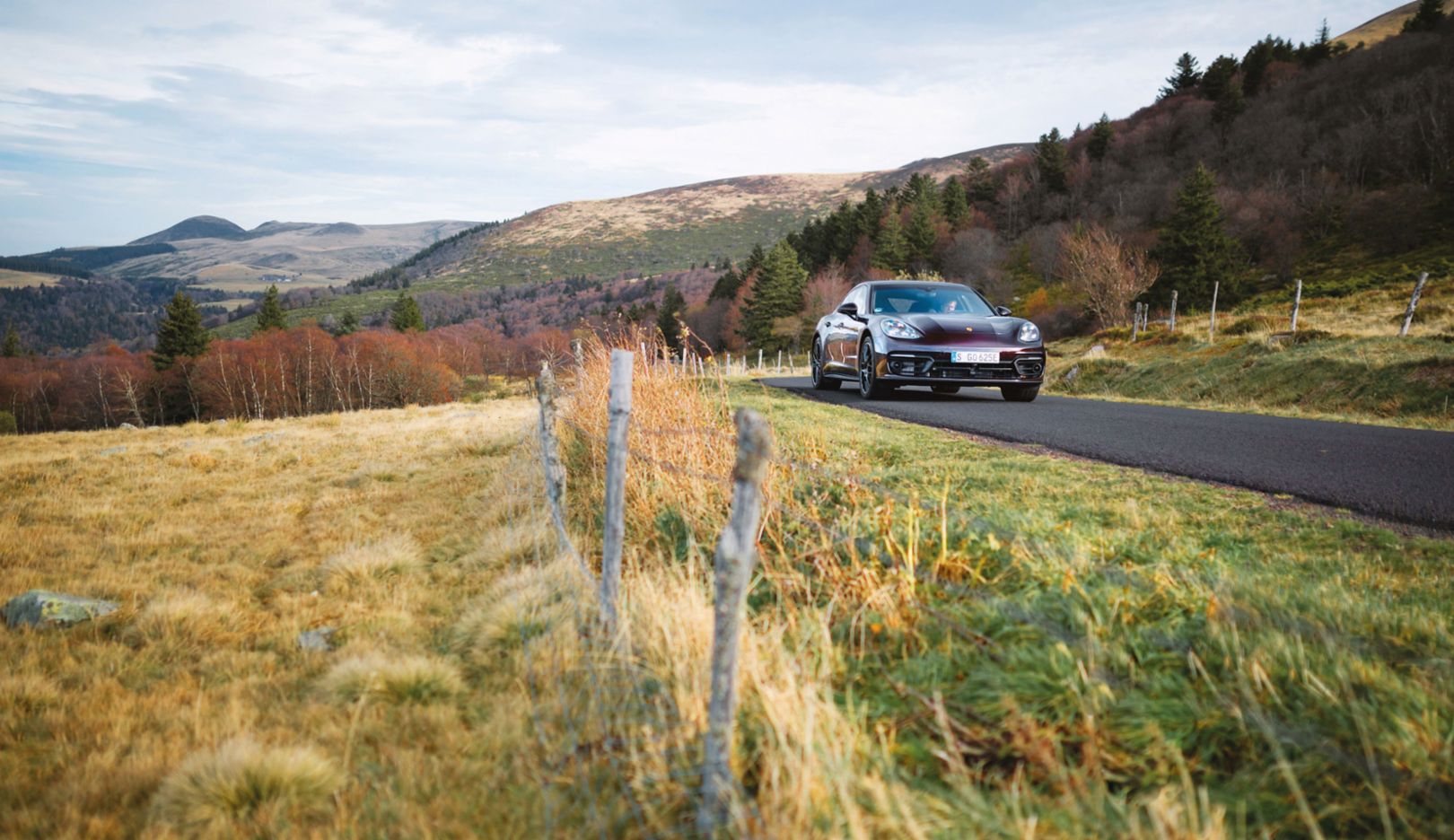
On our way:
We drive along Puy de Sancy, the highest point of the Massif Central, which is the source of the Dordogne.Time for some music. We were inspired by the Top Gun: Maverick soundtrack emanating from the speakers of the Burmester sound system in our Panamera 4S E-Hybrid. “Time is running out, no need to take it slow,” sings the band OneRepublic. “But I ain’t worried ’bout it.” The lines are somehow fitting on this sunny morning. We can take our time unraveling the secrets of one of the most exciting landscapes that western Europe has to offer. But the Panamera is anything but slow as it chauffeurs us along the narrow, windy country roads.
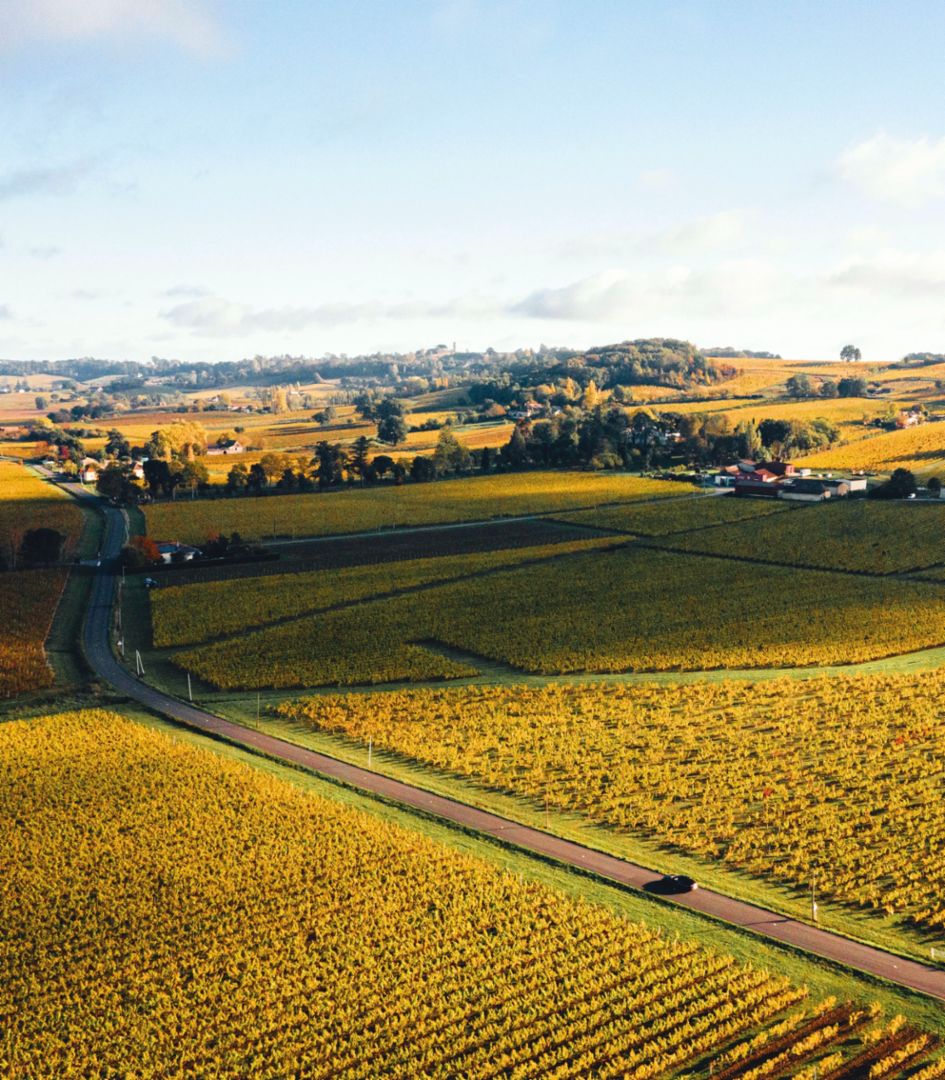
Cultural landscape:
The diversity of the French southwest ranges from centuries-old viticulture tradition in Bordeaux to the 19th-century art of gardening in Marqueyssac.Ahead of us is the Massif Central and its highest peak, the 1,885-meter Puy de Sancy. We can see by the sparse vegetation that the landscape is volcanic. But not to worry – Puy de Sancy has long been dormant, just like the nearby Puy de Dôme, one of the most notorious ascents in the Tour de France. In July 2023, the volcano will be included in the classic cycling event again for the first time in 35 years.
We pass the village of Mont-Dore with its hot springs of around 40 degrees Celsius, once prized by the Gauls and Romans. The spa town experienced its heyday early in the 19th century, as evidenced by the Établissement Thermal resort to this day.
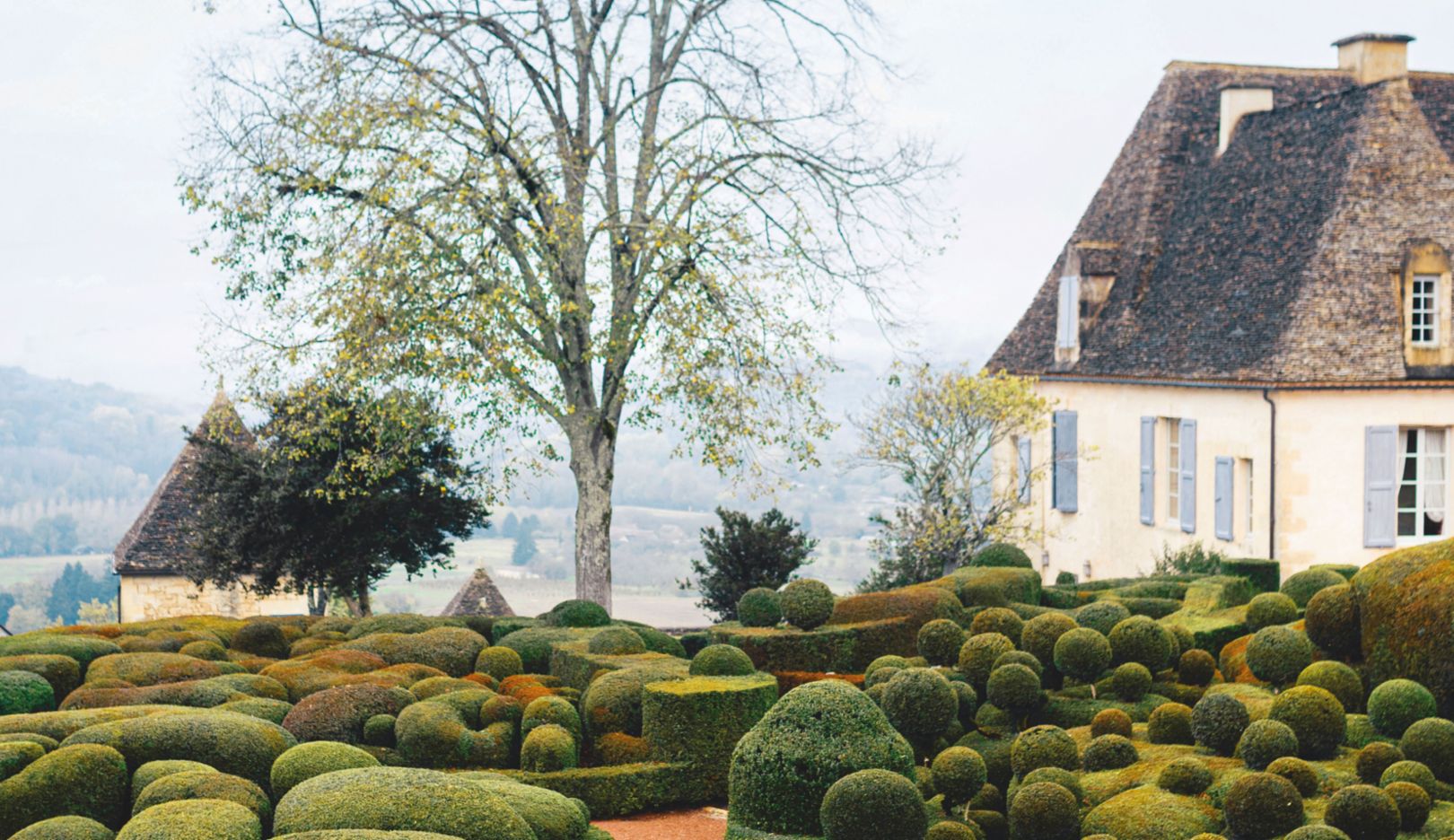
The Dore and Dogne streams join together nearby and create the Dordogne. The effect is relatively unspectacular, with a bridge and a few footprints forming a small trail. A sign asks fishermen to release the fish they catch “back into the Dordogne.” On our journey to the Périgord plains, we follow the west-flowing river for a length of nearly 500 kilometers – through gorges and past stone walls.
Avoiding the larger A89 southwest highway, we prefer to stick to the narrower roads, where the all-wheel Panamera can show what it’s made of – with unadulterated driving fun.
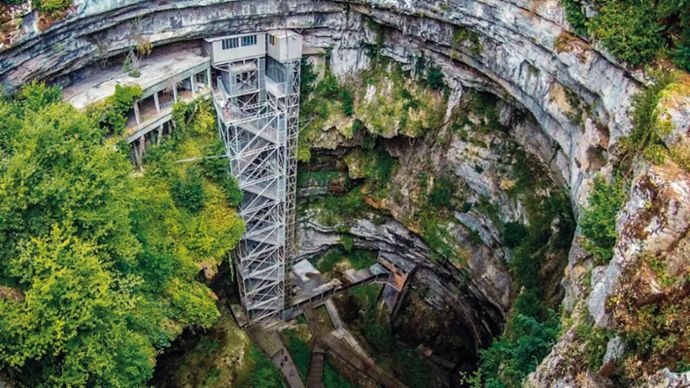
Access to the underworld:
A chasm about 70 meters deep leads to Padirac Cave. A boat ride on the subterranean river offers spectacular sights.

The route takes us past enormous underground caves, the most famous of which is Padirac Cave, an extraordinary natural wonder that’s well worth a stop. Following the descent into a chasm around 70 meters deep – there’s also an elevator available if necessary – visitors will discover a cave system a good one and a half kilometers in length, with a subterranean river suitable for small boats. Underwater lighting provides spectacular light effects. The cave opens up into massive rock domes before narrowing again, with enormous stalactites jutting down from the ceiling. “Keep your head down,” the young boat driver frequently warns us as she maneuvers the boat along the narrow river.
Once out of the cave, we follow the old trade routes above ground, which connected the most important cities and religious centers during the Middle Ages.
More than a thousand years old, the Rocamadour pilgrimage site is nestled up against a nearly vertical cliff, which is what gives it its architectural charm. The site extends across three levels, which can only be explored by foot.
The village itself forms the lower level, its popular main street now dotted by restaurants, cafes, and shops offering regional products such as Cabécou de Rocamadour, a goat cheese you simply have to try. A set of stairs leads to the sanctuaire (holy city) with its seven churches, still an attraction for many Camino de Santiago pilgrims to this day. An imposing medieval castle towers high above on the peak. The climb is demanding, but well worthwhile. High up on the mountain, we enjoy a spectacular view of the surrounding valleys.
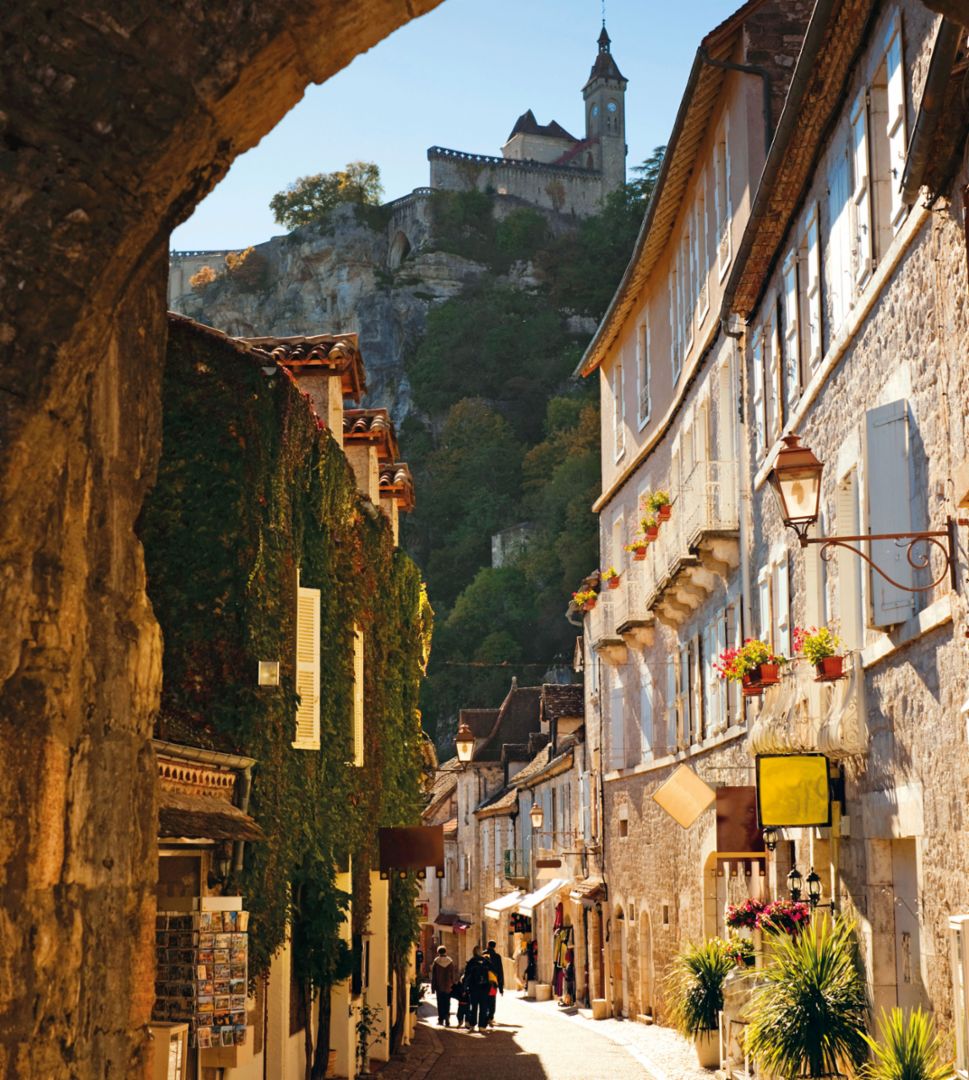
Line of sight:
High up in Rocamadour – the 14th-century castle towers above on the peak.
Near the water:
Nestled up against the steep cliff, the village of La Roque-Gageac was one of the most important trading centers along the Dordogne in the Middle Ages.The route offers some extraordinary hotels and restaurants in castles and on former estates. We opt for the beautiful Domaine de Rochebois, located between wooded hills and a nine-hole golf course.
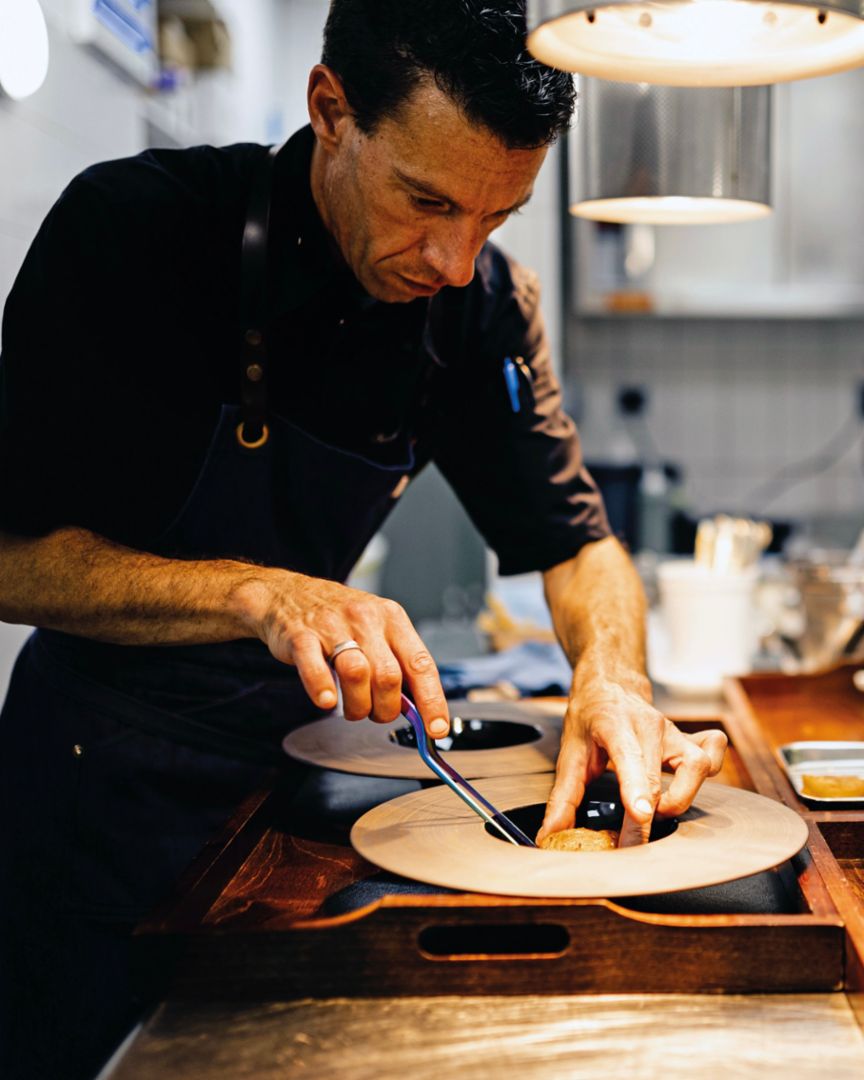
Haute cuisine:
Head chef Jean-Philippe Vecco pampers his guests with a surprise menu at Domaine de Rochebois.A surprise menu by head chef Jean-Philippe Vecco awaits us at the hotel, which was built in 1850. Jerusalem artichoke in coconut milk, beef in an estragon and caviar emulsion, poultry quenelle in lobster soup, and red beet ice cream with fig and licorice are just a few of the creations with which Vecco pampers his guests.
It’s important to the chef to use regional products, which he prefers to purchase at the market in nearby Sarlat. Held on Wednesdays and Saturdays, the market offers delicacies such as porcini mushrooms, preserved duck legs, fresh duck breast, walnuts, honey, and wine. And Sarlat is also the most important location for truffles, the most precious product the region has to offer. The season for the classic black Périgord truffle extends from December to February, while the summer truffle (Tuber aestivum) is available from May to August and ideally enjoyed fresh and even raw – for year-round indulgence.

In Castelnaud-la-Chapelle, we meet a man who knows everything there is to know about the bulbous fungus. Laurent Chambon is the third generation to operate the family’s truffle and walnut farm. “Truffles don’t require much,” says the 62-year-old laughing. “Just a suitable climate, good soil, and the right tree.” Suitable trees include oak, hornbeam, black pine, walnut, juniper, and willow. Truffles attach to the roots of the tree and can be found at a depth of around 30 centimeters. All you need is an acute sense of smell. Once the responsibility of the proverbial truffle hog, the task is now entrusted to dogs. Chambon’s five-year-old Australian shepherd, Noxo, is a “busy finder,” his owner says with pride. “He scratches on the ground to let us know he has found a truffle, without digging it up himself and damaging it.” Noxo’s reward: a sausage.
After truffles, walnuts are the region’s second most important culinary export. A mild climate and clay and limestone soil create the ideal conditions. In the Middle Ages, farmers paid off their debts with nuts. Trade boats began navigating the Dordogne to Bordeaux in the 17th century, resulting in active export to Germany, England, and the Netherlands.
Laurent Chambon has approximately 750 walnut trees, from which he produces his highest-quality oil using the traditional method based on a 16th-century mill wheel that weighs hundreds of pounds. He also operates industrial production at his farm, which supplies a much higher yield. “We can’t live from tradition alone,” he says.
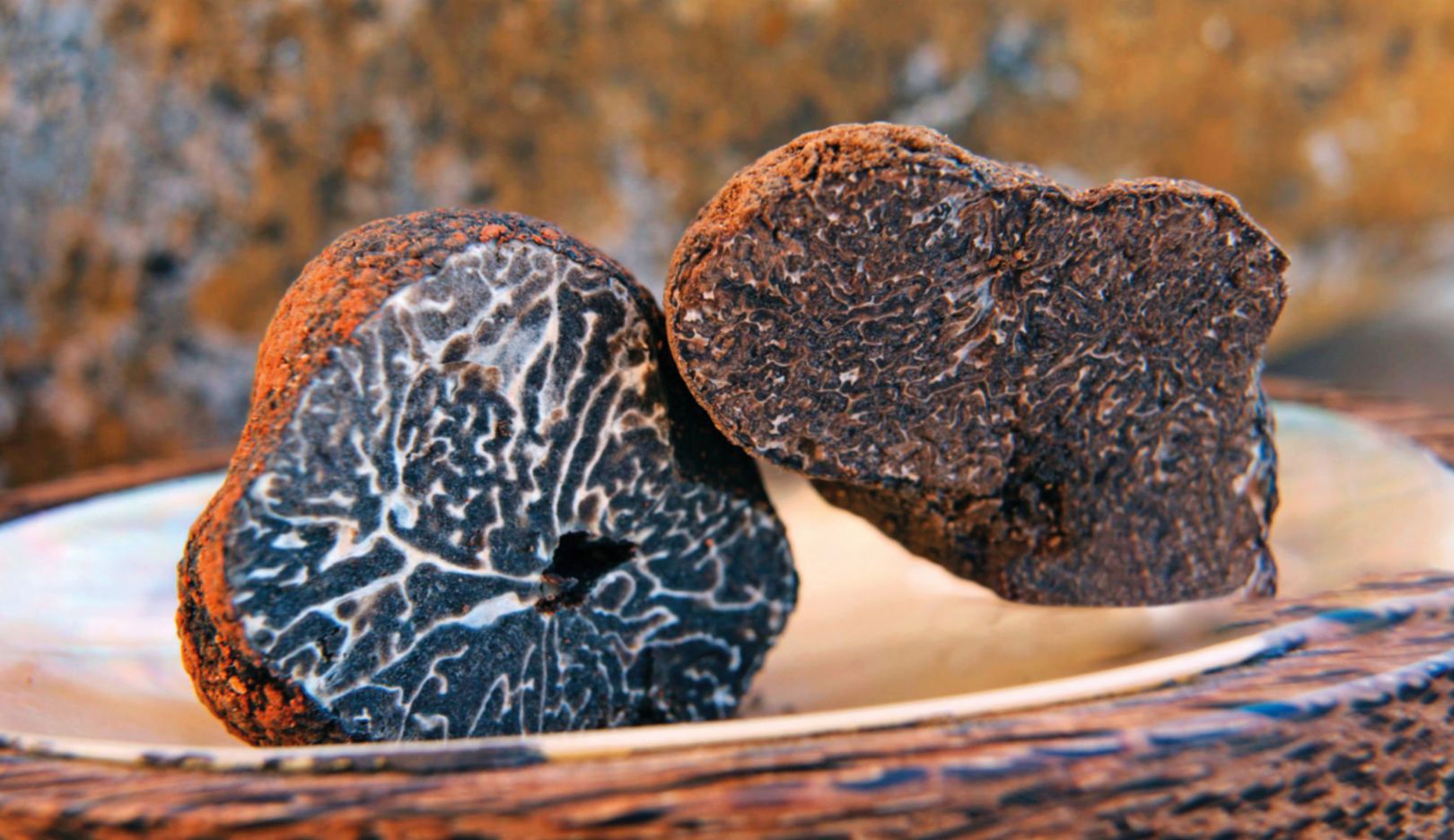
Quality production:
Périgord is famous for its black truffles and its walnuts.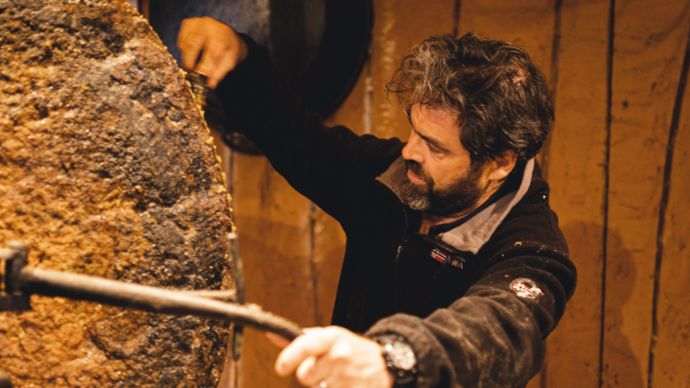
Original:
The highest-quality walnut oil is produced using traditional processes.
Though tradition is ubiquitous in the region. Located around 130 meters above Dordogne Valley, the 17th-century Château de Marqueyssac offers a breathtaking panoramic view. Its hanging gardens are best known for their hundred-year-old boxwoods.
Twice a year, an army of gardeners trim the 150,000 sensitive trees by hand to maintain the right shape. “Electric shears would crush the leaves,” explains Christophe Kurzac, assistant to the head gardener, “which is why the shaping alone takes six weeks.” The gardeners suspend a dense network of threads above the boxwoods to achieve precise cutting based on ingenious patterns. “It’s always exciting,” says Kurzac. “The park looks a lot like a spiderweb.”
Anyone who chooses to take an extended stroll through the grounds will make friends with free-range peacocks – and with the largely preserved skeleton of a dinosaur, displayed here primarily to delight children. Considered to be a cousin of the better-known tyrannosaurus, the allosaurus lived around 150 million years ago – however, not in the region surrounding Marqueyssac, but far away in Arizona, where it was discovered in 2013.
As we temporarily leave the Dordogne and follow Vézère Valley, which is also known as the cradle of mankind, we come across some much younger treasures. The valley is home to the Lascaux cave with its 20,000-year-old paintings as well as the caves of Les Eyzies, which served as shelters around the same time. Toward the end of the ice age in Europe, the climate here in the region was comparably mild, which attracted many animals from around the entire continent. The people followed their food and settled along the Vézère, which marks the beginnings of a European high culture.
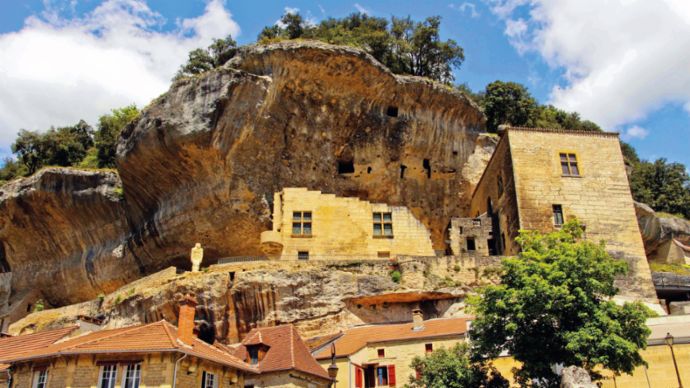
Settlement:
People lived under overhanging rocks and in caves in Vézère Valley in prehistoric times.
Historical:
Sarlat-la-Canéda was first established in the 13th century and is now home to around 9,000 people.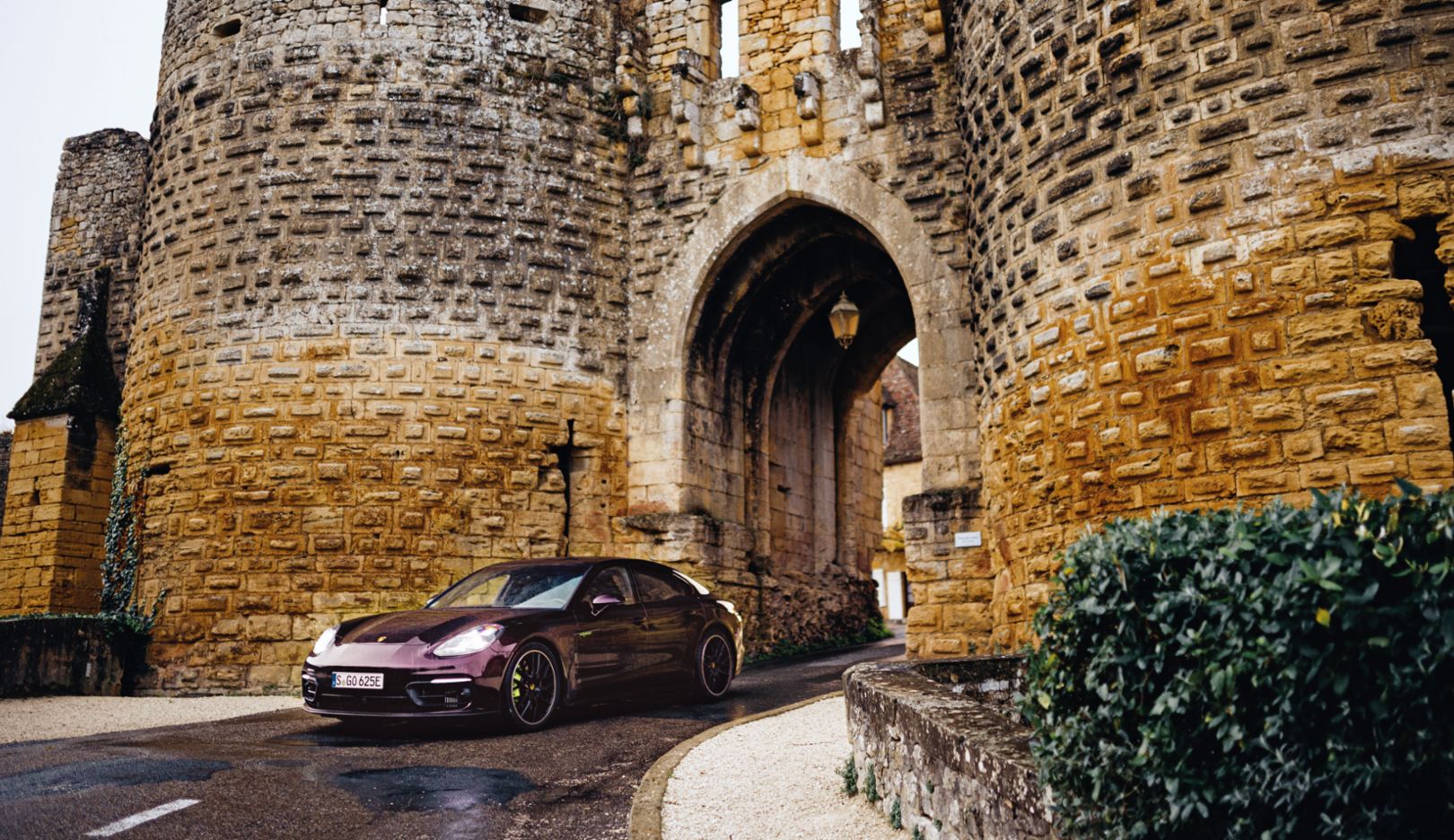
Impressive sight:
The Porte des Tours is the icon of the medieval fortified village of Domme.The Vézère flows into the Dordogne in Limeuil, located in the west. We enjoy an espresso on the terrace of the only cafe in the village, which offers a spectacular view of the sunset. We follow the river, this region’s lifeline, and eventually reach the vineyards surrounding Bordeaux, the most famous wine-growing region in France.

Popular locations:
The gardens of Marqueyssac are home to free-range peacocks. Built between 1810 and 1822 on the orders of Napoleon I, Pont de Pierre (below) was the only connection between the western and eastern banks in the port city of Bordeaux for quite some time.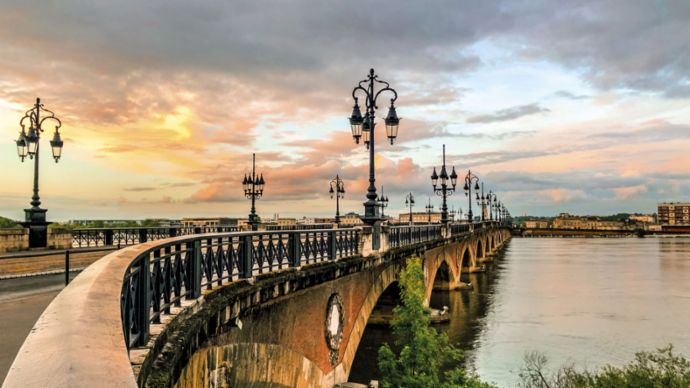
The landscape softens and the roads widen as we approach the port city of Bordeaux and thus the Atlantic. The soundtrack of the legendary first Top Gun movie from 1986 emanates from the Panamera’s speakers. “Never took this road before,” sings Marietta Waters. “It don’t matter where it takes me, long as I can keep this feeling running through my soul.”
The route along the Dordogne is good for the soul.

Charged:
With its appealing combination of internal combustion engine and electric motor, the Panamera 4S E-Hybrid shows what it’s made of on the journey of discovery.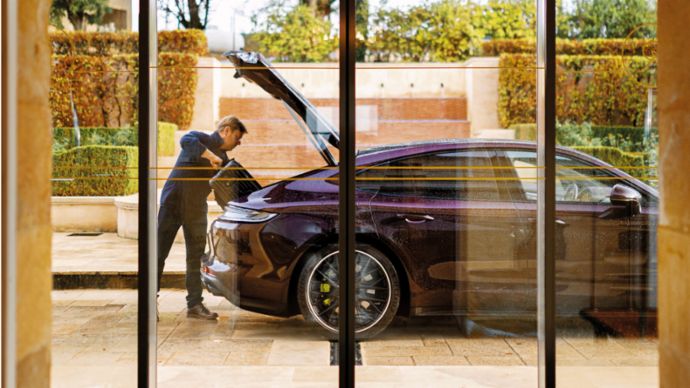
Reliable companion:
After around 519 kilometers along the Dordogne, the journey in the Panamera comes to an end.Further information
Do you want to explore the Dordogne yourself? Find the entire route in the Roads App.
Consumption data
911 Turbo
Macan Electric
-
19.4 – 16.8 kWh/100 km
-
0 g/km
-
A Class
Macan Turbo Electric
-
20.7 – 18.4 kWh/100 km
-
0 g/km
-
A Class


